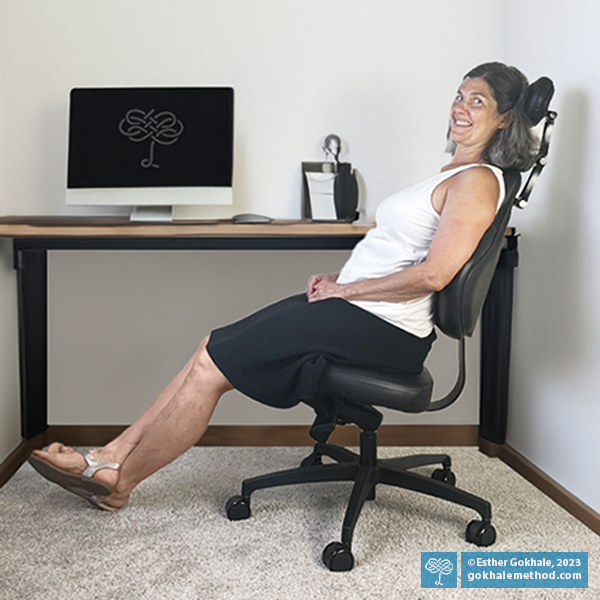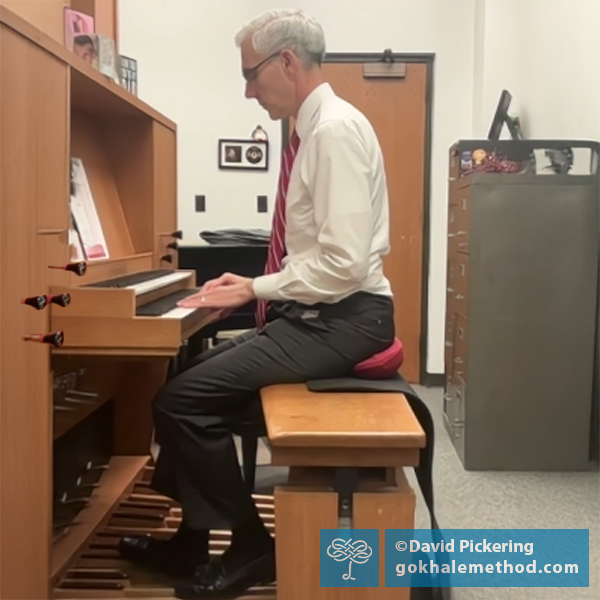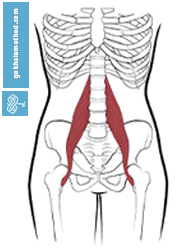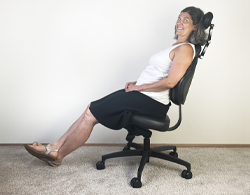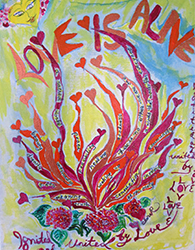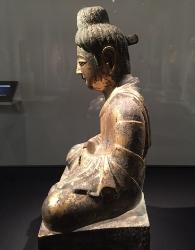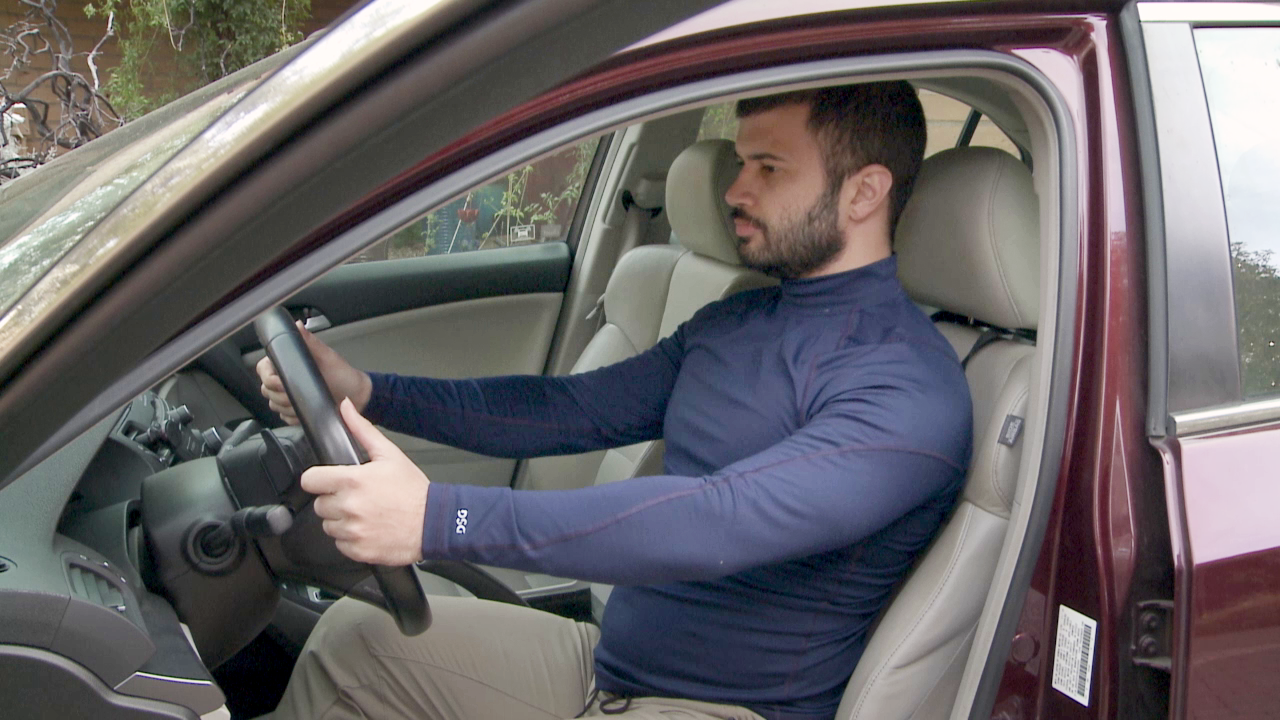There’s no doubt that dysfunction abounds when it comes to sitting. Most of us spend many hours on poorly designed chairs, in poor posture. As many people know all too well, poor sitting habits can definitely set you up for chronic back pain and tension.
The good news? With just a little time and awareness, we can learn to sit well. There is real beauty and functionality in sitting done skilfully! When you do, sitting becomes not only comfortable, but also healthful and therapeutic.
Getting Upright Sitting “Just Right”
Some things in life want to be “just right.”. There is a popular fairytale about the importance of this—the story of Goldilocks and the Three Bears. The most well-known version features a young girl with golden hair who wanders into the woods and finds a house with no one home. It belongs to Papa, Mama, and Baby bear. The story goes that Goldilocks
Playing the Organ with No Pain and More Musicality
I came upon the Gokhale Method® very much by chance. Years ago I worked with a pianist named Sheila Page who was trained in a technique which was founded by the American music teacher Dorothy Taubman. Taubman observed people with high levels of playing ability, found out what they did so well, codified it into a method and taught it. At a Taubman workshop I heard of Peter Egoscue, who had devised a therapeutic exercise program; I worked from his book when I hurt in places, and had some improvement with that. Doing further research for pain relief, I then encountered Esther Gokhale’s name. Not too long after, my son and I drove together to attend a one-day Immersion course Esther was teaching in Boulder, Colorado.
Back Spasm Remedies
You’ve tweaked your back. It may be a stabbing pain that catches with certain movements, it may be that you cannot straighten up, or maybe it’s an electrical, nervy sensation in your buttock.
How to Fix a Tight Psoas
When students first meet with a Gokhale Method® teacher they are sometimes surprised to learn that one of the reasons for their back pain is a tight psoas muscle. What does this little-known muscle, embedded deep within our bodies, have to do with back pain? And what do we need to do to have it recede in the background and leave our backs alone?
The Gokhale® Executive Chair: Sitting for Success
Our very successful Gokhale® Pain-Free Chair was launched ten years ago, 2013> celebrating the philosophy that sitting is a natural, healthy activity. This office chair was designed to facilitate stretchsitting and stacksitting, two key techniques of the Gokhale Method® that transform sitting into a comfortable activity that heals you rather than hurts you.
Clare’s Gokhale Method® Success Story
In January and February this year I took the Gokhale Method Elements course, which consists of 18 brief (13 minute) but potent lessons. I would like to share my experience of the Gokhale Method with you in this blog post.
My goals were to find out how to sit, stand, and walk well, so that I don’t overstress the scoliotic parts of my back. I was also in search of more comfortable and beneficial sleeping positions. I felt I needed guidance to help me develop a better sense of my body posture and alignment. To be able to do a one-on-one course online made this possible for me.
It was only when I saw the difference between my “Before” and “After” pictures that I realized just how much change it was possible to make to my posture in such a relatively short period.
Posture Tips for Meditators
It has been over 60 years since Eastern schools of meditation became widely known in the U.S. and Europe, and meditation became widely practiced, with over 14% of Americans having meditated at least once. If we include those practicing mindfulness techniques, using meditation apps, and attending yoga classes with a meditation component, this figure goes far higher.
The effects of sitting in meditation
The potential benefits of meditation are well known, and include a calmer, clearer mind, lower levels of stress, better sleep, improved relationships with others, and better mental health.
From a posture perspective, whether you sit in meditation regularly or are just getting started, you want the experience to be as healthy for your body as it is for your mind.
Giving Thanks
There are so many things in my life that I feel thankful for, and Thanksgiving gives an opportunity to reflect on these feelings of gratitude. For our newsletter I wanted to share the deep gratitude I have for my personal journey out of back pain, and for how that journey continues as a growing ability to support and empower others in this direction.
When I came to write this blog post, I quickly realized that this is a daunting task! The truth is that so many people have played invaluable parts, both great and small, in helping me to create the Gokhale Method® that it’s impossible to pay tribute to everyone in a short piece of writing. So I decided there will be other posts of gratitude, including to my teachers, to the people around the globe on whom this work is based, and to our team of dedicated teachers and staff. But on this National Day of Thanksgiving, I’d like to focus on things related to living and working in the US.
Secrets to Pain-Free Sitting, Part 2: The Making of a New TV Show
Welcome to the second blog post in which I am delighted to tell you more about our exciting recent TV project. If you missed it, you can read The Secrets of Pain-Free Sitting, Part1: The Inspiration behind a New TV Show here.
Getting the Gokhale Method out there
People are sitting poorly and continue to blame sitting for their back pain. And so we created Secrets to Pain-Free Sitting, a pledge show that the Gokhale Institute made with producer Frank Zamacona for American Public Television (APT). The solution to back pain has never been so urgently needed—and now, with our new 45-minute show, so available.

